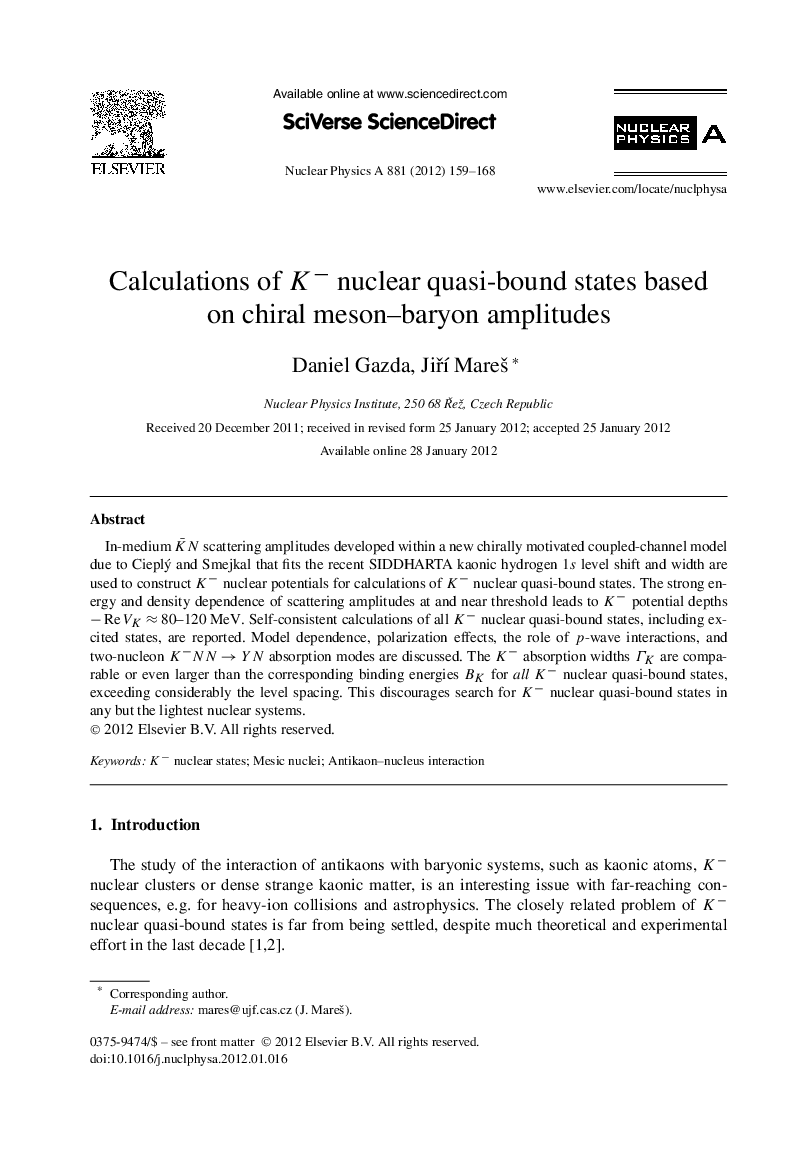| Article ID | Journal | Published Year | Pages | File Type |
|---|---|---|---|---|
| 1837289 | Nuclear Physics A | 2012 | 10 Pages |
In-medium scattering amplitudes developed within a new chirally motivated coupled-channel model due to Cieplý and Smejkal that fits the recent SIDDHARTA kaonic hydrogen 1s level shift and width are used to construct K− nuclear potentials for calculations of K− nuclear quasi-bound states. The strong energy and density dependence of scattering amplitudes at and near threshold leads to K− potential depths . Self-consistent calculations of all K− nuclear quasi-bound states, including excited states, are reported. Model dependence, polarization effects, the role of p-wave interactions, and two-nucleon K−NN→YN absorption modes are discussed. The K− absorption widths ΓK are comparable or even larger than the corresponding binding energies BK for all K− nuclear quasi-bound states, exceeding considerably the level spacing. This discourages search for K− nuclear quasi-bound states in any but the lightest nuclear systems.
